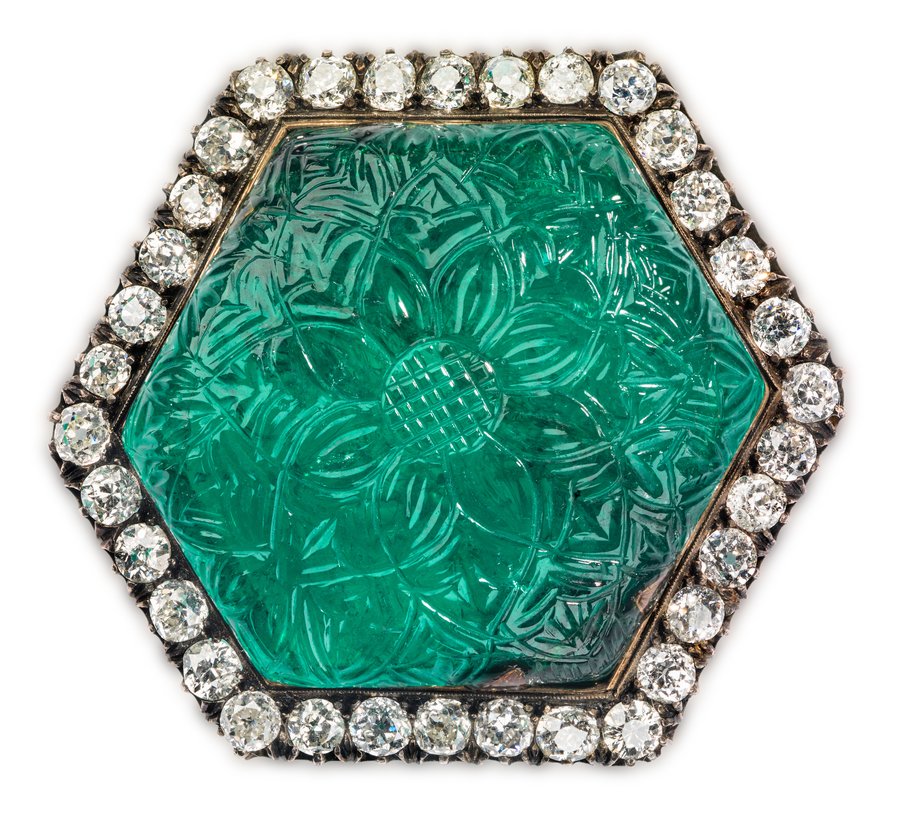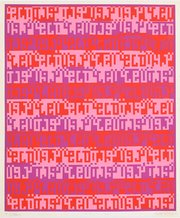
Brooch
Museum of Islamic Art
- Title:
- Brooch
- Production place:
- India
- Date:
- 1650 - 1899
- Period:
- 17th century CE
- Title:
- Brooch
- Production place:
- India
- Date:
- 1650 - 1899
- Period:
- 17th century CE
- Material:
- Emerald, Diamond, Gold, Silver, Solder
- Technique:
- Carving, Gem setting, Gilding, Soldering
- Dimensions:
- 0.8 × 4.1 cm
This brooch consists of a magnificent 11th century AH/17th century CE carved Mughal emerald mounted into a later, 13th century AH/19th century CE setting, surrounded by thirty-four brilliant cut diamonds. Of hexagonal form, this vivid green emerald has been skilfully carved by Mughal lapidaries, who have decorated its entire surface with a single floral spray – the centre of which is detailed with a fine, cross-hatched pattern – from which a series of finely delineated petals radiate outwards. On the reverse and sides of the emerald are a series of partially drilled holes, suggesting that the stone was previously set into another jewelled ornament, most likely a bazuband (arm band). Deep green emeralds like this originally came from Colombia, where new deposits were discovered by Europeans in the 10th century AH/16th century CE, and arrived into the Mughal court through the adoption of new maritime trade routes. The Mughals, who themselves inherited a long tradition of hard stone carving from their ancestors, the Timurids, further embellished these precious stones with rich floral patterns or inscriptions.



